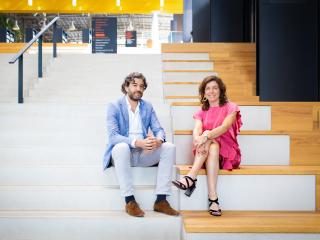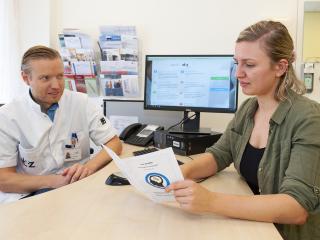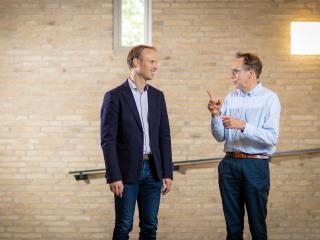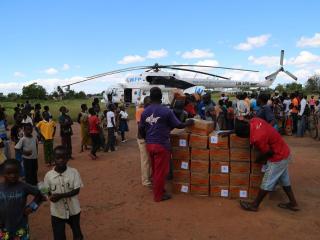How do you better organize health care chains?
How do you organize the care pathway around a patient as optimally as possible? Tilburg University studied the care for children with Down syndrome in four Dutch hospitals. “A study that we can apply to many more illnesses and care pathways.”
‘Take the patient's needs as a starting point’
Pediatrician at the Jeroen Bosch Hospital and endowed professor at Tranzo, Esther de Vries, has been working on the care of children with Down syndrome for years. Together with Bert Meijboom, full professor at TiSEM and endowed professor of organization of health care chain at Tranzo, she started the research. “The care for children with Down syndrome is organized within a team. But as a specialist, you look at a child from the perspective of your own profession. You often don't know exactly what your colleagues do and how parents experience the care. Through this research, we have made that transparent.”
Lego bricks
How do you better organize care by specialists? Bert Meijboom: “By organizing the care in a modular way, just as you do with Lego. Each brick has its own characteristics; together they form a personalized care plan for a child. The connection is in the studs. This creates a personal approach.”
' Because I am guided by medical, economic, and social sciences, I gain insight into different perspectives'
- Vincent Peters
Doing research
Vincent Peters carried out the investigation. In May 2016, he started to establish contacts with specialists from the four hospitals involved: Jeroen Bosch Hospital, Elisabeth Tweesteden Hospital, Maxima Medical Centre, and the Spaarne Gasthuis. “In addition, I came into contact with parents through the pediatricians who coordinate the care of children from 0 to 18 years of age. In the second year, I collected the data through interviews. I analyzed it over the previous year, and I'm currently writing my thesis.” The hospitals involved come from the network of De Vries.
Organized differently
Although the thesis has not been completed yet, Peters would like to give you a glimpse of the results. “What struck me was that the four hospitals had all organized their care differently, within the existing multidisciplinary guideline. I've identified how it is done now and who does what. That gave insight.” De Vries: “How health care is organized and which parties are closely or more remotely involved, grows over the years. It doesn't matter that every hospital is different. By providing insight into this, you can work together better.”
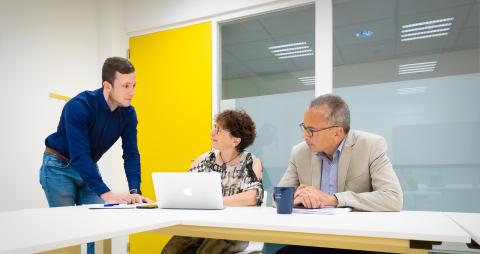
'The current research provides a good basis in terms of literature research and working methods for other illnesses and care pathways'
- Esther de Vries
View on care
“In addition, the difference in perspective on care was noticeable,” continues Peters. “The professionals look primarily from the point of view of the care that they can offer. For example, an ENT specialist offers a hearing test, while parents do not primarily want such a test. They want their child to be able to communicate. That's a different starting point and results in a different conversation.” “It is better for health care professionals to take the needs of parents and children as a starting point,” adds Meijboom. De Vries: “You enter into a long relationship with these children and their parents in which there is always a changing demand for care. By taking that into consideration, the care is much more in line with the need.”
More applications
More health care professionals can benefit from these lessons. Esther de Vries: “In March 2019, a similar study into colorectal oncology was started. The patient follows a different care pathway, which is more chronological than for children with Down syndrome. However, the research method is the same. The current research provides a good basis in terms of literature research and working methods.” The PhD candidate carrying out the new research into colorectal oncology is financed from the Impact PhD Program.
Confusion
“At the same time, it is still a matter of personalizing care for the patient,” continues Meijboom. “One cancer patient, for example, likes to have blood results on his Smartphone, while another would prefer to discuss them with the doctor in person. There must be room for these differences in approach.” Interdisciplinary research sometimes leads to confusion. “It turns out that personalization in health care is the same as customization in organizational sciences.” De Vries nods: “And, in turn, personalization is professional behavior in health care from an economic perspective.” Meijboom: “This can lead to misunderstandings if you work from different disciplines. But it's not a drama if the will to work together is present.”
'It's about personalizing the care for the patient'
- Bert Meijboom
Different perspectives
Peters sees it above all as added value. “Highly recommended even. Because I am supported by medical, economic, and social sciences, I gain insight into different perspectives. That makes the research better.” And is Tilburg University the right party for this kind of research in the medical world? De Vries: “That's exactly the case! Universities with medical schools focus more on quantitative research. However, sometimes something wonderful is invented that is subsequently not implemented because whether and how people want to do this has not sufficiently been taken into account. By taking the social sciences into consideration, you prevent that.”
Applied research
“In my work, I have regularly come across questions that I did not have an answer to. I then went on to do research into that,” adds De Vries. “So it makes perfect sense to me to do research into something that makes an impact. My research questions are always followed by the question 'and what can you do with it?’” Meijboom shares this view. “You see a shift from pure scientific research to its application. This is good, but it requires a different approach: more qualitative and not just quantitative research. In this study, this means, for example, that Vincent spoke extensively with parents and professionals and tested his findings on them at a later date.” Peters: “During my Master's I started with research that led to policy in the workplace. That was and is also my approach; that something is done with my work.”
Contact
- Esther de Vries
- Bert Meijboom
- Vincent Peters
More articles Focus on Impact
Date of publication: 13 February 2020



